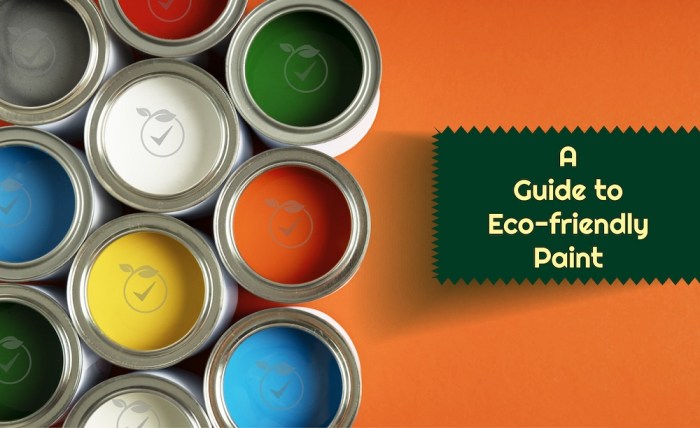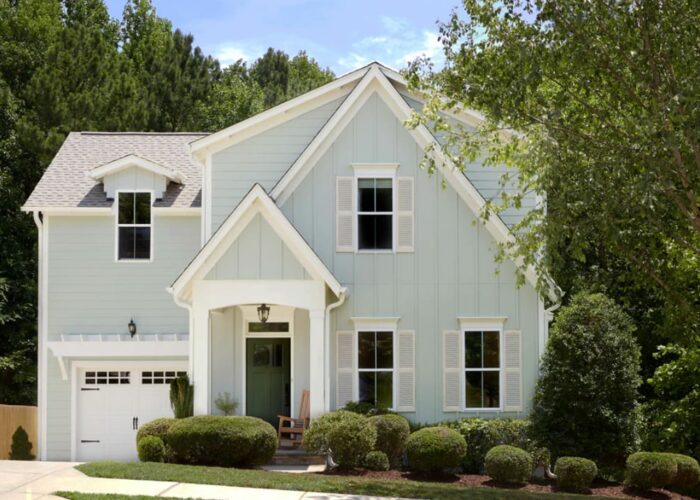Exploring Eco-Friendly House Paint Options

Embark on a journey through the world of eco-friendly house paint options, where sustainability meets style. From plant-based paints to water-based alternatives, this guide delves into the nuances of choosing environmentally conscious paints for your home.
Delve into the benefits, application techniques, and cost considerations of these eco-friendly options to make an informed decision for your next painting project.
Types of Eco-Friendly House Paints
When it comes to eco-friendly house paints, there are different options available in the market that are not only better for the environment but also for your health. Two common types are water-based paints and natural paints.
Water-Based Paints vs. Natural Paints
- Water-Based Paints:
- Contain lower levels of volatile organic compounds (VOCs) compared to traditional oil-based paints.
- Dries faster and emits fewer odors, making it a more convenient option for indoor painting projects.
- Easy to clean up with water, reducing the need for harsh chemicals.
- Natural Paints:
- Typically made from renewable resources such as plant oils, resins, and natural pigments.
- Free of VOCs and other harmful chemicals, making them a safer choice for individuals with allergies or sensitivities.
- Biodegradable and non-toxic, reducing environmental impact during production and disposal.
Plant-Based Paints and Their Benefits
- Plant-Based Paints:
- Derived from sources like soy, citrus, linseed, or other plant oils.
- Offer excellent coverage and durability similar to conventional paints.
- Reduce carbon footprint and support sustainable farming practices.
Benefits of Using Eco-Friendly House Paints
Eco-friendly house paints offer a range of benefits that go beyond just adding color to your walls. From improving indoor air quality to reducing environmental impact, these paints are a great choice for both your home and the planet.
Improved Indoor Air Quality
Eco-friendly paints are formulated without harmful chemicals like volatile organic compounds (VOCs) that can off-gas and pollute indoor air. By choosing eco-friendly options, you can create a healthier living environment for you and your family, especially important for those with respiratory issues or allergies.
Reduced Impact of VOCs
Traditional paints often contain high levels of VOCs, which have been linked to various health problems and environmental concerns. Eco-friendly paints have significantly lower levels of VOCs or are VOC-free, making them a safer and more sustainable choice for your home.
Durability and Longevity
Contrary to the misconception that eco-friendly paints are less durable, many eco-friendly options are just as long-lasting as conventional paints. Some eco-friendly paints even offer enhanced durability, making them a practical choice for high-traffic areas in your home. By investing in eco-friendly paints, you not only contribute to a healthier environment but also ensure the longevity of your paint job.
Application and Usage
When it comes to applying eco-friendly house paints, the process is quite similar to conventional paints, but with a few key differences. It is essential to follow the manufacturer's instructions carefully to ensure optimal results and environmental benefits
Surface Preparation
Properly preparing the surfaces before applying eco-friendly paints is crucial for a successful paint job. Here are some tips to ensure the best results:
- Clean the surface thoroughly to remove any dirt, dust, or grease that could affect adhesion.
- Repair any cracks or holes in the surface and sand down rough areas to create a smooth base for painting.
- Use a primer specifically designed for eco-friendly paints to enhance adhesion and durability.
Special Considerations
When using eco-friendly paints, there are some special considerations to keep in mind:
- These paints may have different drying times compared to traditional paints, so be patient and allow sufficient time for each coat to dry.
- Some eco-friendly paints have a lower odor, making them ideal for indoor use, but proper ventilation is still essential during application.
- Consider the environmental impact of cleaning up after painting - opt for non-toxic cleaning products to maintain the eco-friendly approach.
Cost and Availability

In terms of cost and availability, eco-friendly house paints offer a competitive alternative to traditional paints. Let's explore the details below.
Cost Comparison
When comparing the cost of eco-friendly house paints with traditional paints, it's important to consider the long-term savings. While eco-friendly paints may have a slightly higher upfront cost, they often require fewer coats and have a longer lifespan, ultimately saving money over time.
Availability
Eco-friendly paint options are becoming increasingly available both in local stores and online. Many major paint brands now offer eco-friendly lines, making it easier for consumers to find these products in brick-and-mortar stores. Additionally, online retailers provide a wide range of eco-friendly paint options, allowing for convenient purchasing and delivery.
Financial Incentives
Some regions may offer financial incentives or rebates for choosing eco-friendly paints. These incentives can help offset the initial cost difference between eco-friendly and traditional paints, making it a more appealing choice for environmentally-conscious consumers.
Last Recap

As we conclude our exploration of eco-friendly house paint options, we are reminded of the positive impact these choices can have on our health and the environment. Make a conscious decision to paint green for a brighter, more sustainable future.
Clarifying Questions
Are eco-friendly house paints more expensive than traditional paints?
While initial costs may be slightly higher, the long-term benefits and durability of eco-friendly paints often make them a cost-effective choice.
How do eco-friendly paints contribute to indoor air quality?
Eco-friendly paints emit fewer harmful chemicals, improving indoor air quality and reducing health risks associated with volatile organic compounds found in traditional paints.
What are some examples of plant-based paints?
Plant-based paints like soy, chalk, and clay paints offer natural alternatives that are biodegradable, non-toxic, and sustainable.

